Delicate Arch: A First Time Hiker Guide

Delicate Arch, located in Arches National Park near Moab, Utah, is one of the most iconic natural landmarks in the United States. Standing at 52 feet tall, this freestanding arch is known for its distinctive shape and stunning views of the surrounding red rock landscape. Hiking to Delicate Arch is a must-do experience for visitors to Arches National Park, offering an up-close look at the park’s geology and breathtaking scenery. This guide will help first-time hikers prepare for a memorable trek to Delicate Arch.















Getting There:
To get to Delicate Arch, you first need to enter Arches National Park and reach the Wolf Ranch Parking lot. This is the main entrance to the hikes to the arch.Photos:
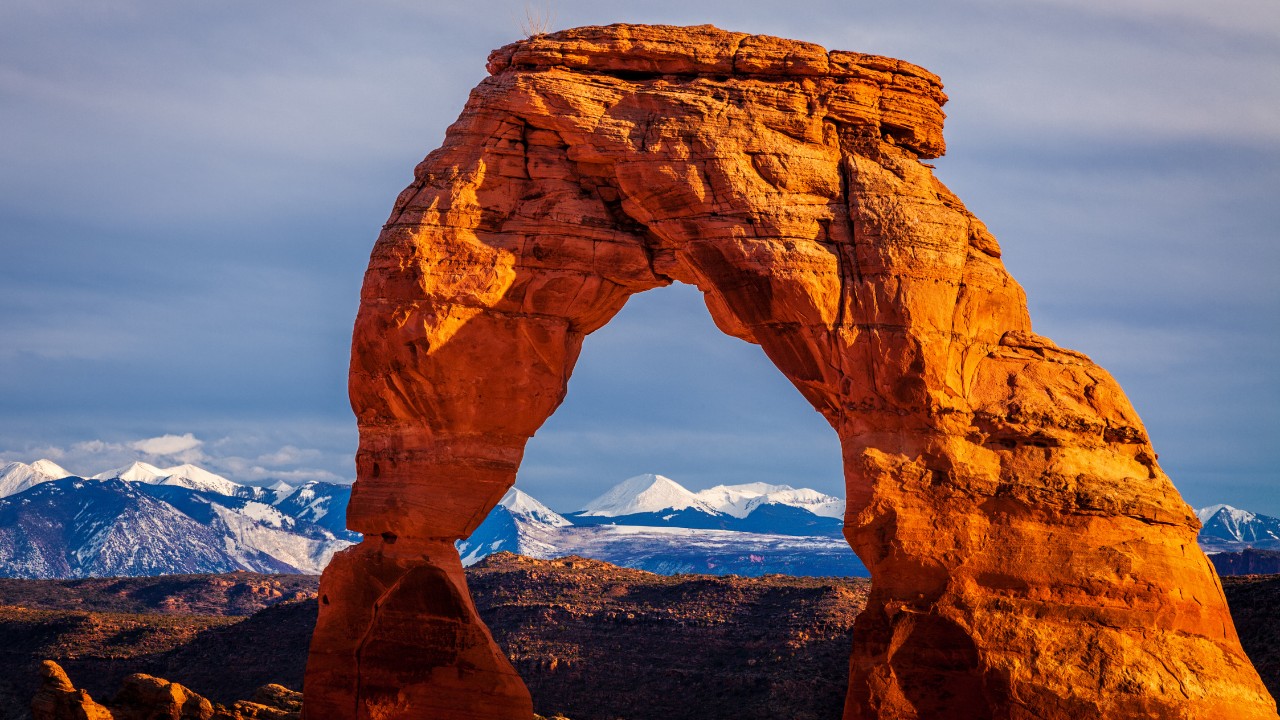
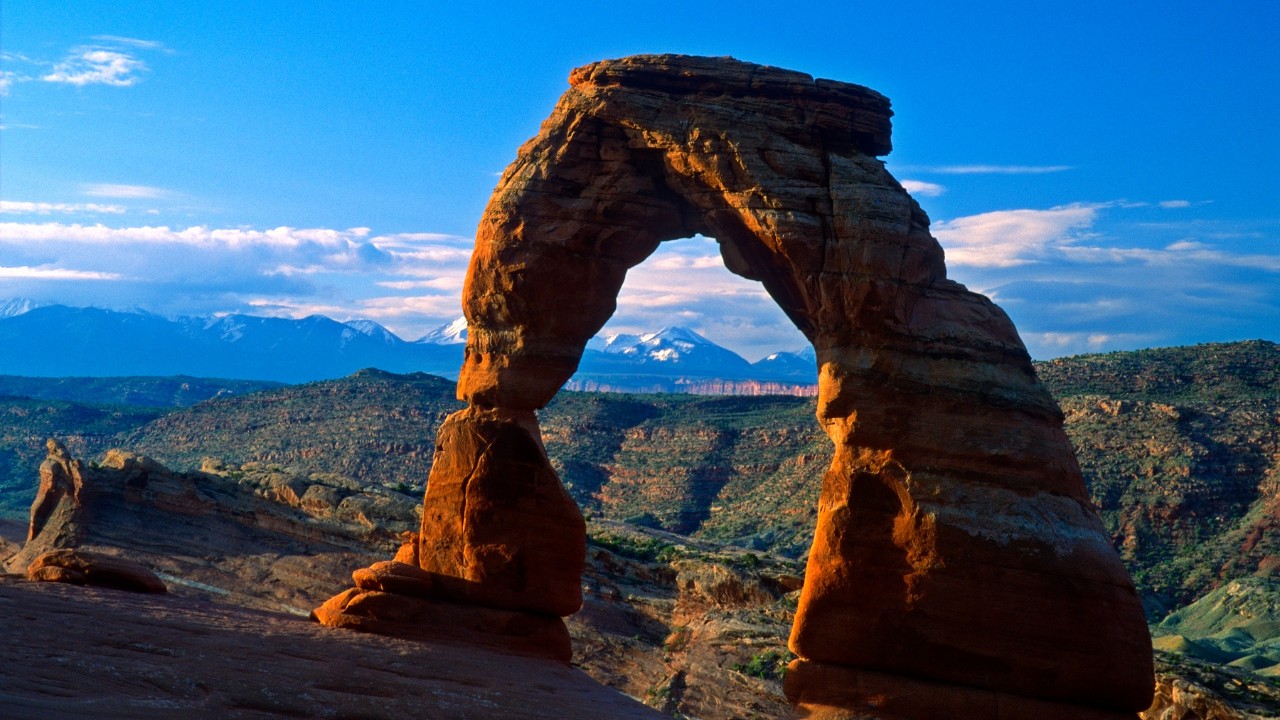

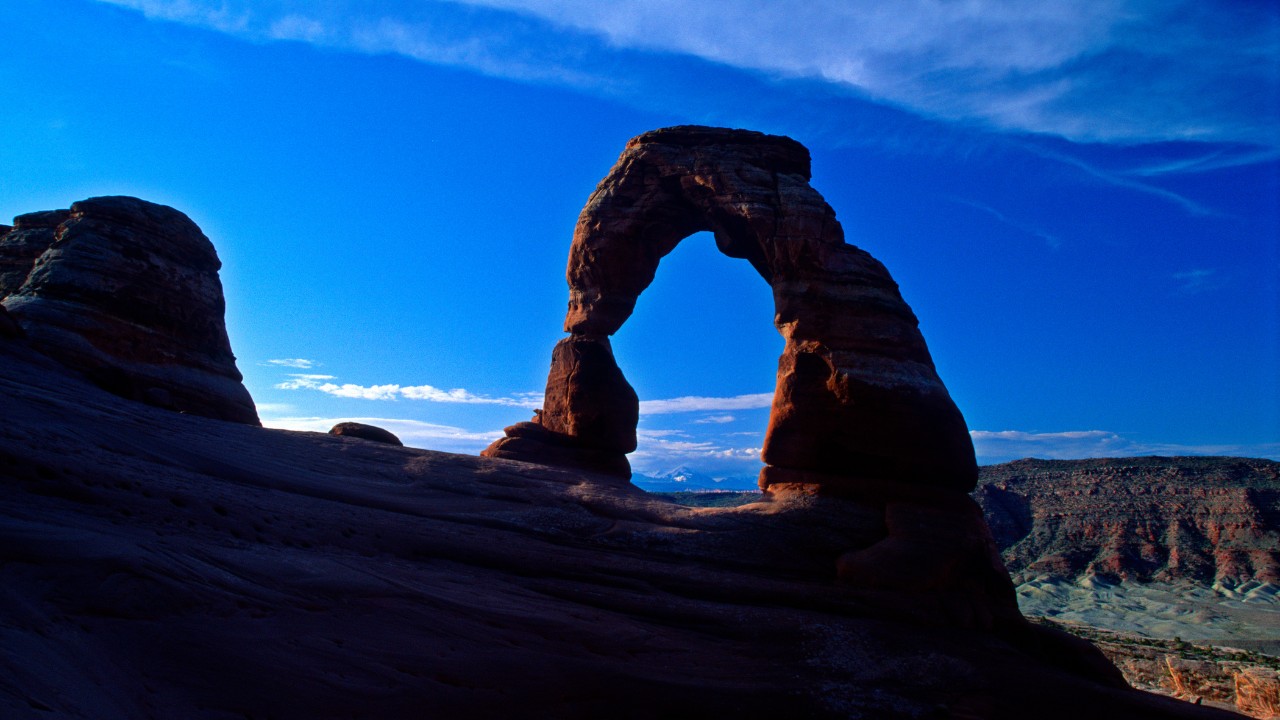
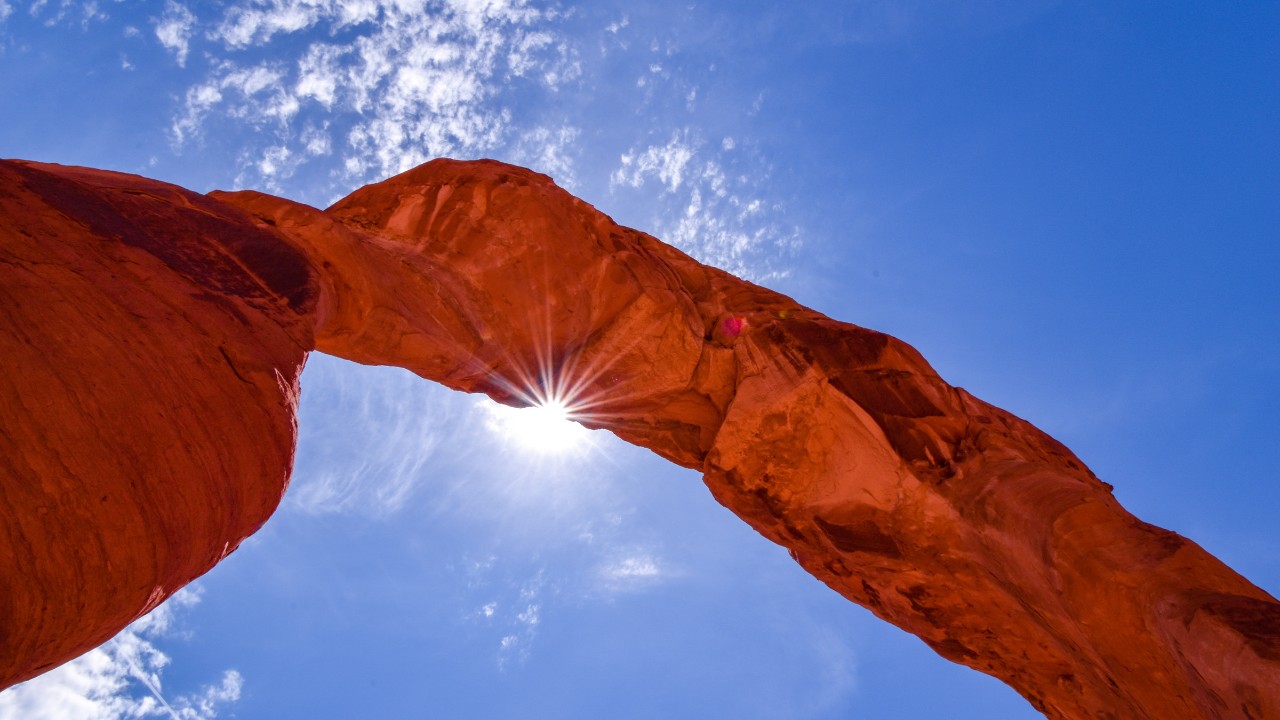
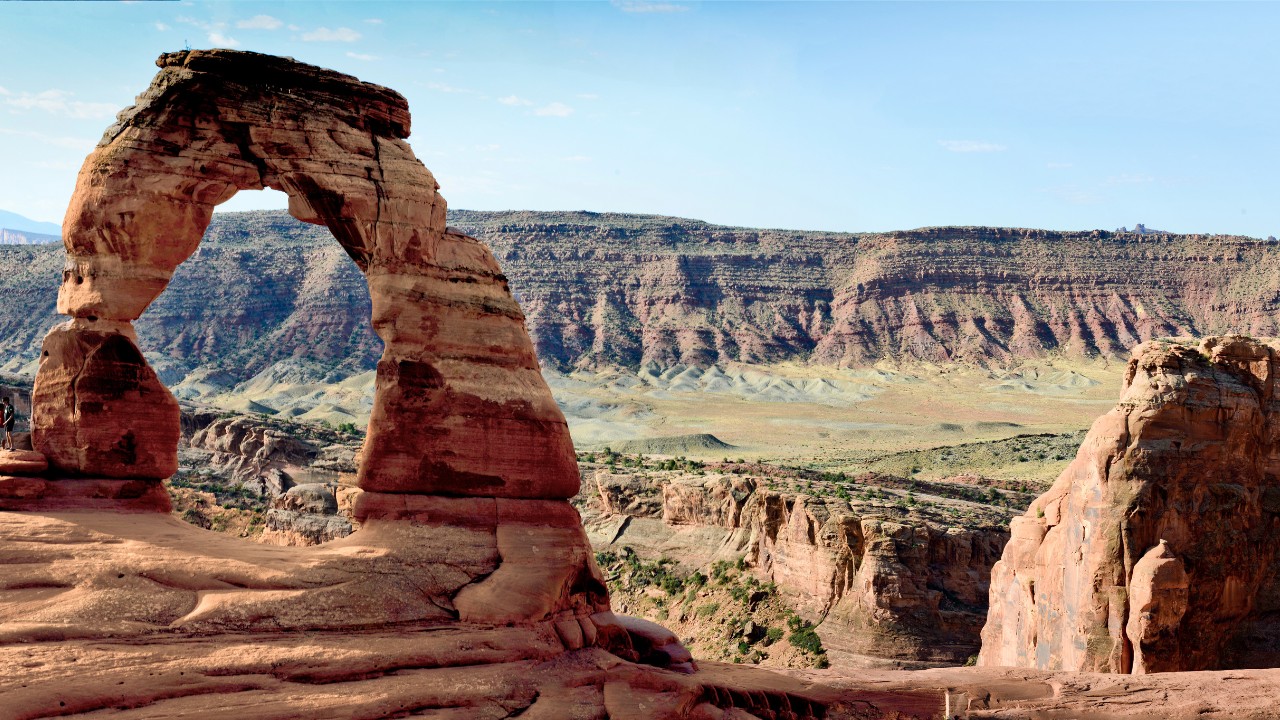
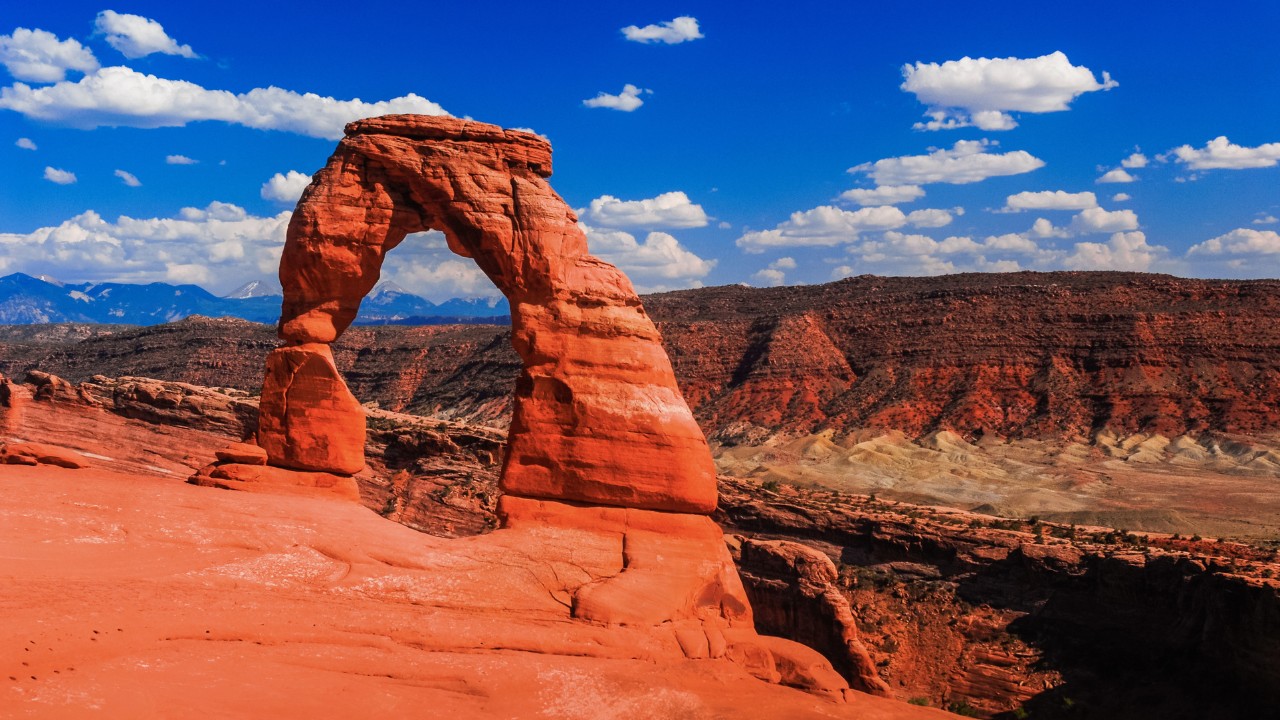
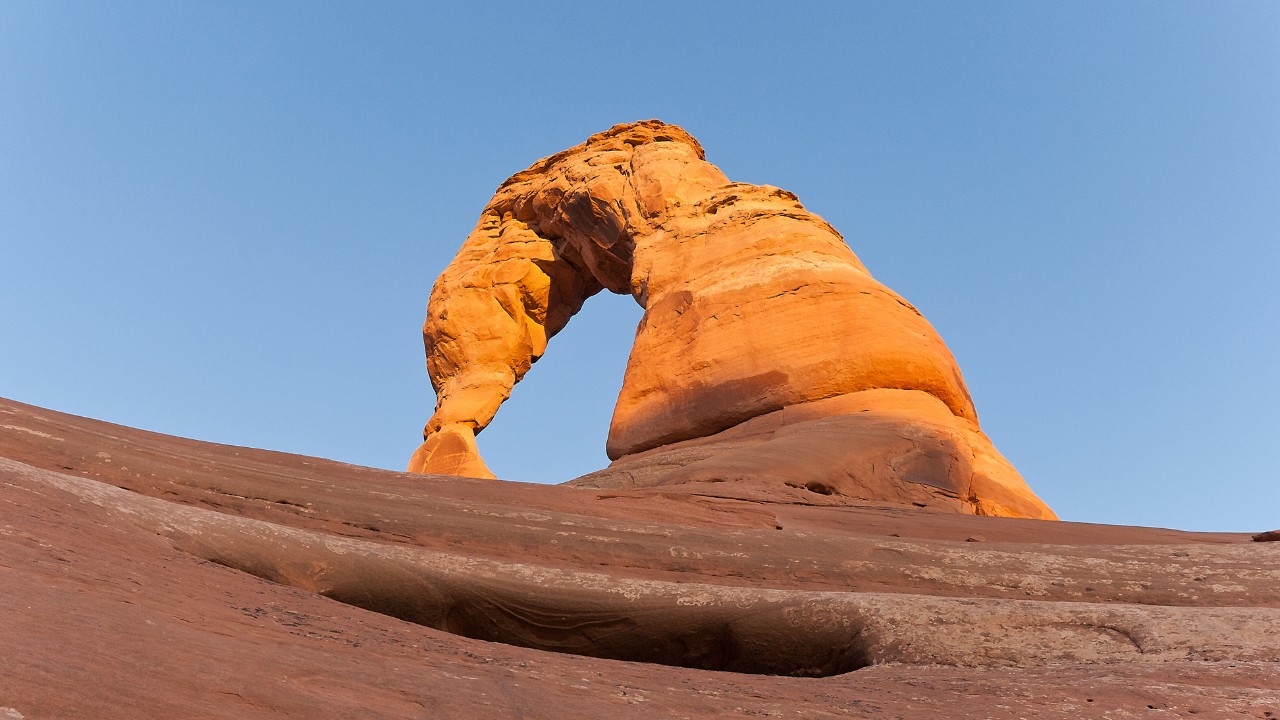
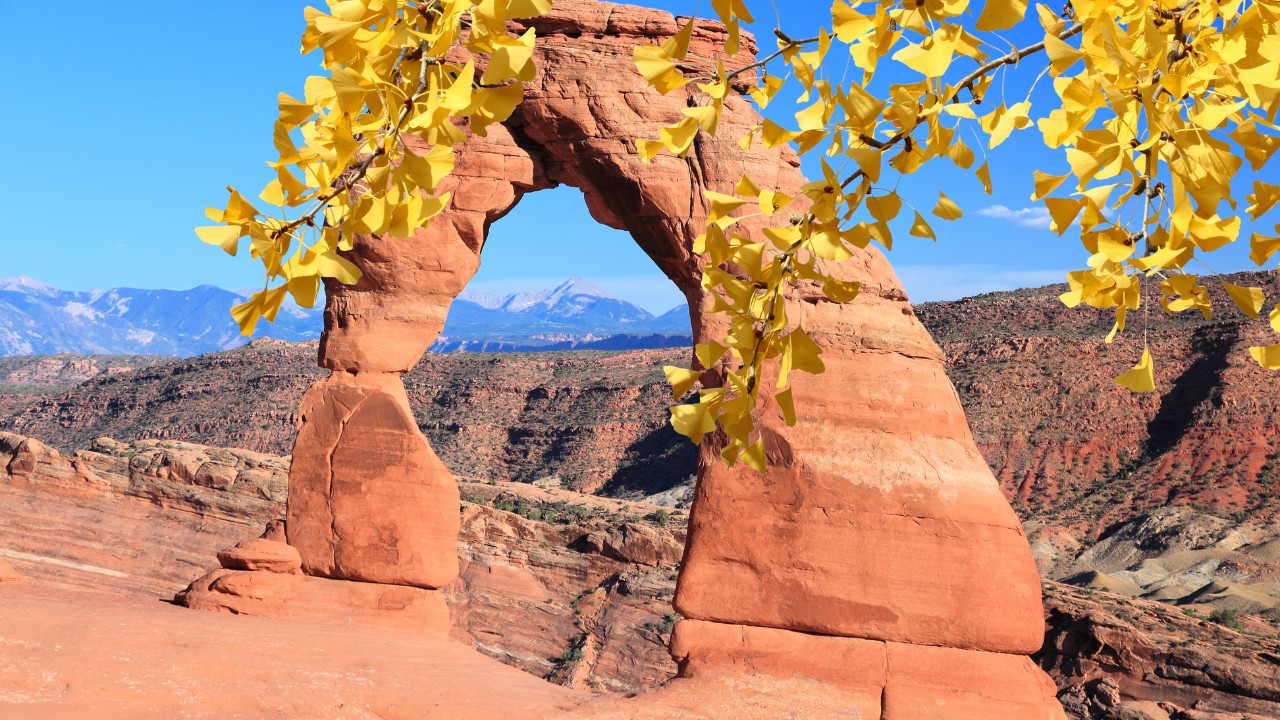
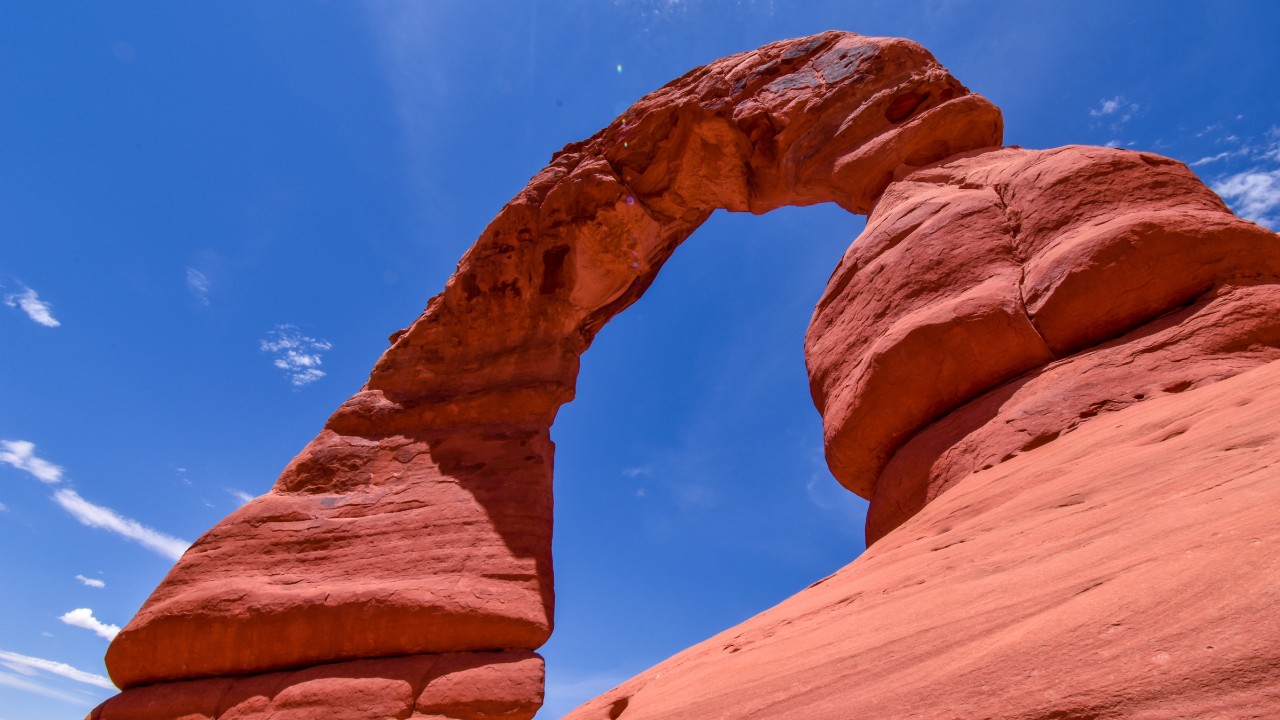

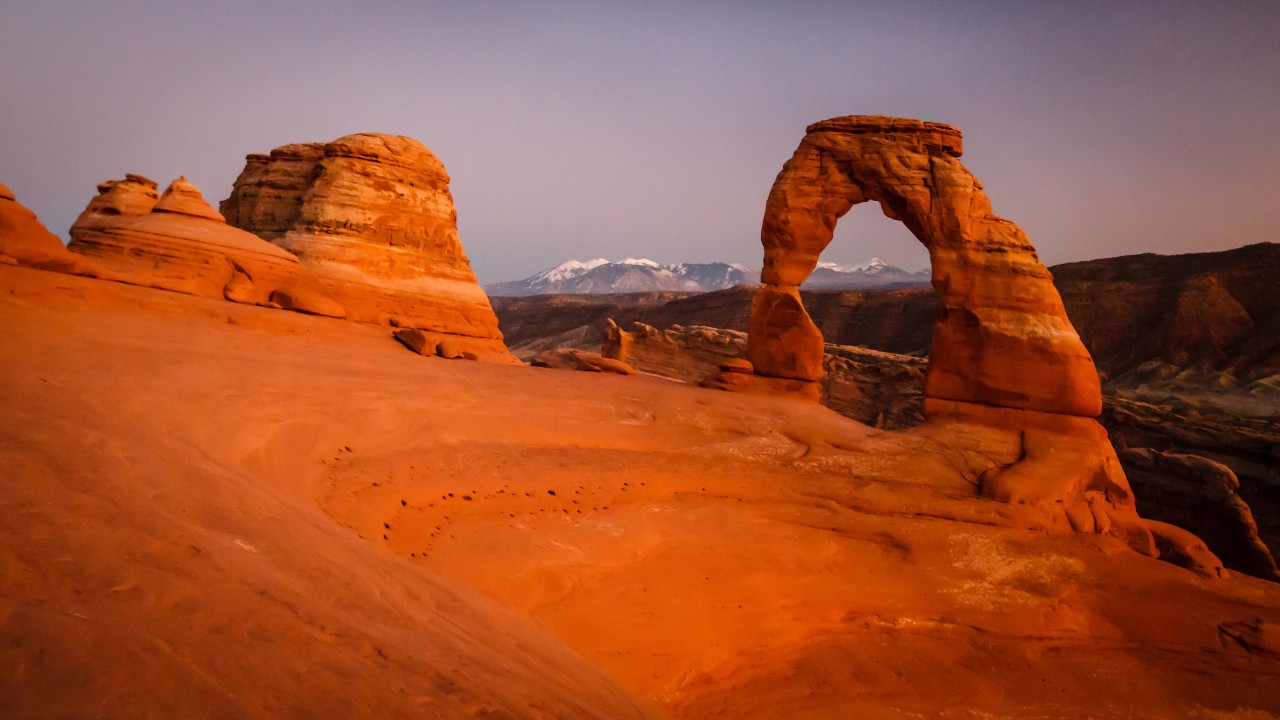
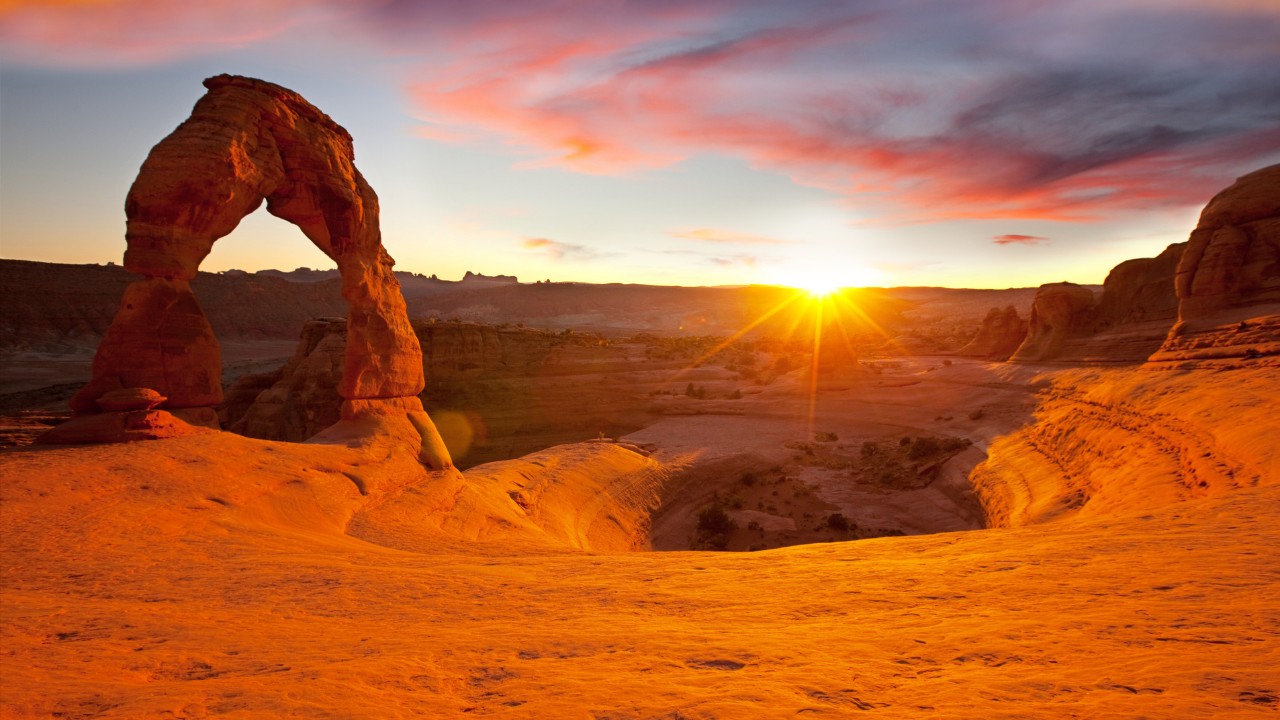
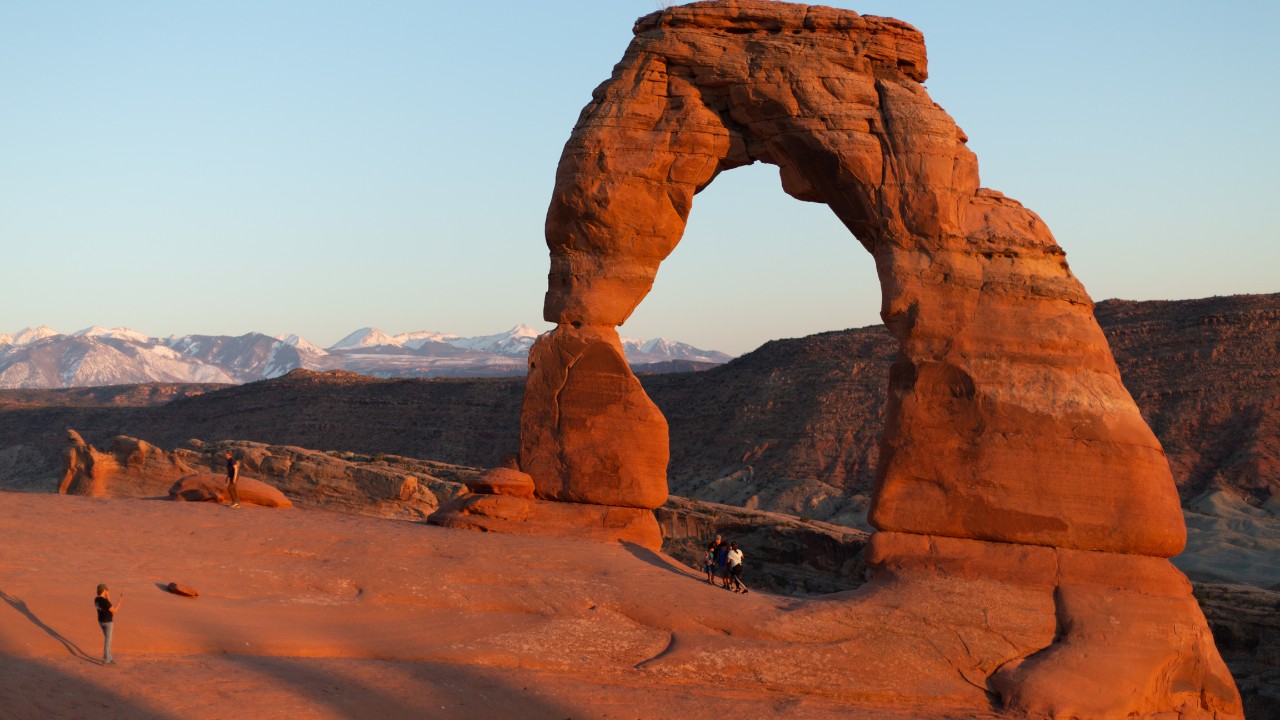
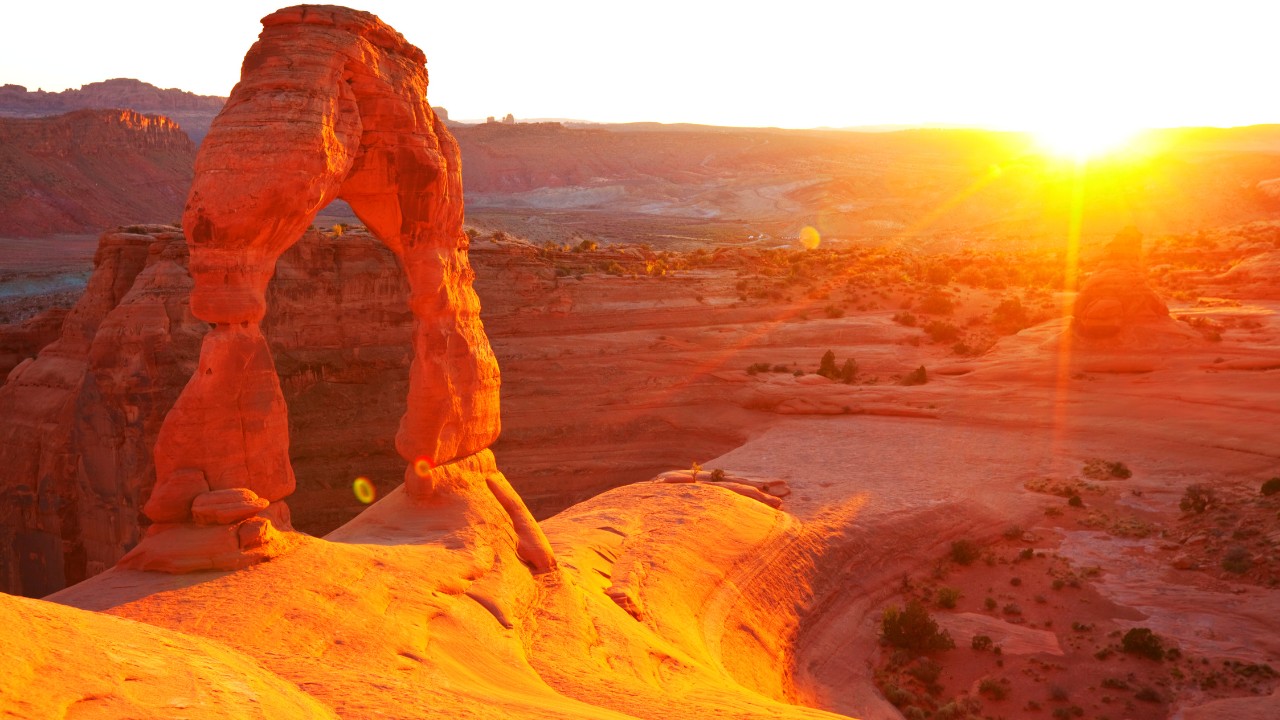
Overview of the hike:
The hike to Delicate Arch is moderately challenging, but the reward is worth every step! Here’s a quick breakdown:- Length: 3 miles round-trip
- Elevation Gain: 480 feet
- Difficulty: Moderate
- Estimated Time: 2-3 hours, depending on pace and time spent at the arch
- Starting Point: The hike begins at the Wolfe Ranch Parking Area, where you’ll see signs for the trailhead. The first section is relatively flat, passing through the historic Wolfe Ranch Cabin and a short detour to Ute Indian petroglyphs carved into the rocks.
- Climbing the Slickrock: After the initial flat section, the trail ascends steadily up a wide, open stretch of slickrock. The ascent can be strenuous, but the panoramic views of the park’s red rock formations are incredible. Follow the cairns (rock piles) to stay on the correct path. The slickrock can be slippery, especially after rain or early in the morning when there’s moisture. Wear shoes with good grip for safer footing.
- The Rock Ledge: The final stretch of the trail follows a narrow rock ledge with a sheer drop-off on one side. While it’s not overly dangerous, take your time, watch your step, and be cautious if hiking with children.
- Arrival at Delicate Arch: The trail opens up to a wide natural amphitheater, and there it is—Delicate Arch, standing majestically against the backdrop of the La Sal Mountains.
Best Time to Hike The Trail:
- Spring (March to May): Spring is one of the best times to visit, with mild temperatures ranging from 60°F to 75°F (15°C to 24°C). The desert blooms with wildflowers, adding vibrant colors along the trail.
- Fall (September to November): Fall also offers comfortable hiking temperatures and fewer crowds compared to summer. Expect temperatures from 55°F to 75°F (13°C to 24°C), making it an ideal time for hiking.
- Summer (June to August): Summer temperatures can exceed 100°F (38°C), making the hike challenging. If hiking in summer, plan to start early in the morning (before 8 a.m.) or later in the evening to avoid the intense heat.
- Winter (December to February): Winter offers cooler temperatures (30°F to 50°F), and the possibility of snow adds a unique contrast to the red rocks. However, the trail can be icy, so wear traction devices for safety.
Gear Recommendations:
- Best rated hiking shoes for day hikes (men/women sizes available)
- Best rated hiking backpack for day hikes
- Best rated hiking pole for day hikes
- Best hiking poles
Tips:
- Start Early or Late: Arrive early in the morning or later in the afternoon to avoid crowds, secure parking, and experience cooler temperatures. Sunrise and sunset hikes offer the added benefit of golden light illuminating the arch.
- Check the Weather: Before heading out, check the weather forecast. Thunderstorms can pose a risk, as there is little shelter along the trail. Strong winds are also common, especially near the rock ledge.
- Stay on the Trail: Follow the cairns and marked path to protect the fragile desert ecosystem. Avoid trampling on cryptobiotic soil, which is vital for desert plant growth.
- Be Mindful of Heights: The final approach to Delicate Arch involves a narrow rock ledge with steep drop-offs. If you’re uncomfortable with heights, take your time and use the rock wall for support.
- Respect the Space: Delicate Arch is a popular photography spot, so be courteous to other visitors, especially those trying to take photos without people in the frame. Take turns getting close to the arch for a quick photo and then move aside for others. Getting there early or during an off season is the best way to avoid the large crowds.
Photography Tips:
- Best Time for Photos: The best lighting occurs during sunrise and sunset, when the arch glows in warm hues of orange and red. Sunset is especially popular, as the sun sets behind the arch, creating a beautiful silhouette against the sky.
- Bring a Tripod: If you’re shooting during low-light conditions, bring a tripod for stability, especially for longer exposures.
- Wide-Angle Lens: A wide-angle lens works well for capturing both Delicate Arch and the surrounding landscape. However, a zoom lens can also be useful for detailed shots of the arch and the distant La Sal Mountains.
Nearby Attractions:
- The Windows Section: This area features North Window, South Window, and Turret Arch, all accessible via a short loop trail.
- Double Arch: Located near The Windows, Double Arch is one of the largest arches in the park and offers a unique perspective for photography.
- Devils Garden Trail: This longer trail features multiple arches, including Landscape Arch, the longest arch in North America.
- More things to do in Arches National Park.
